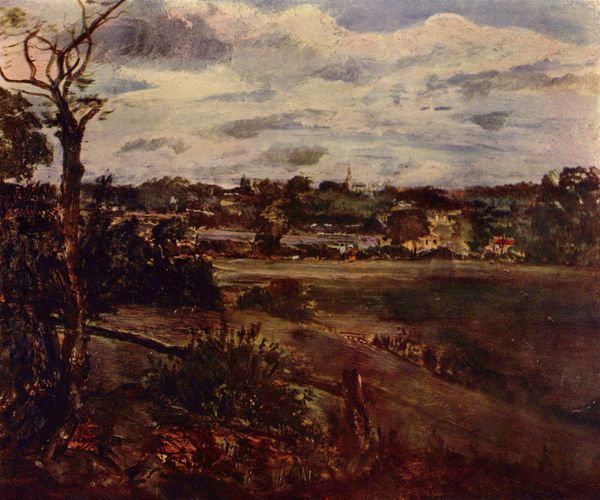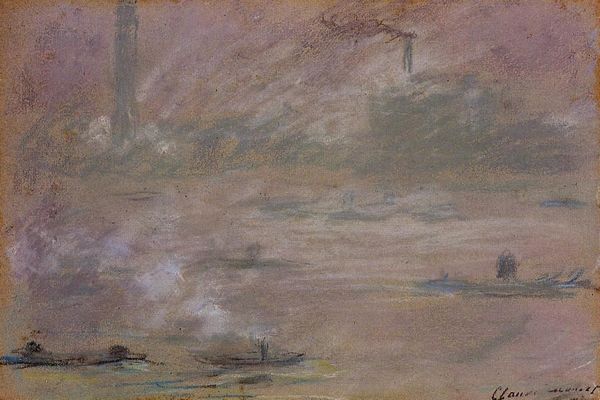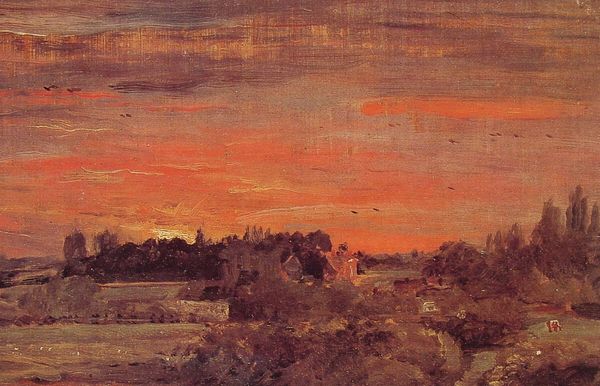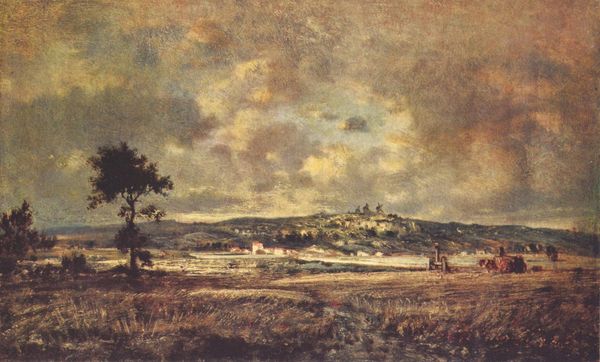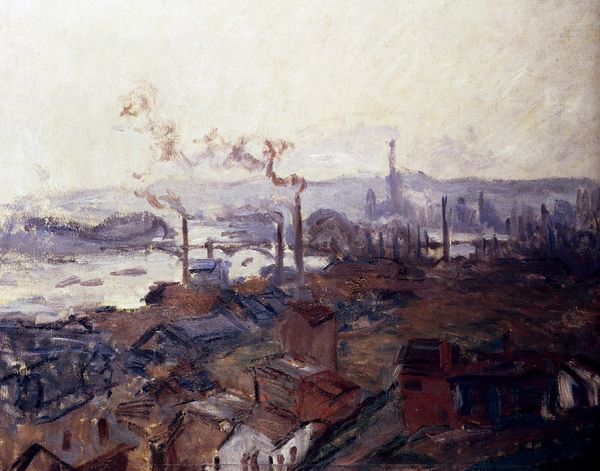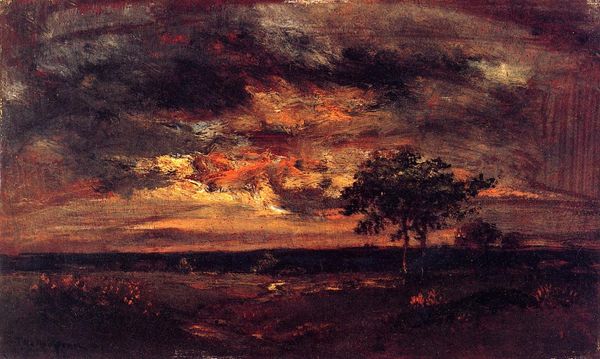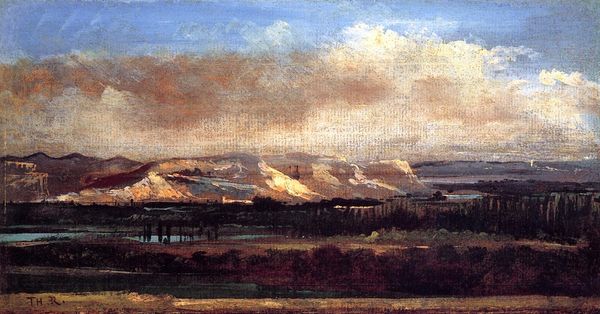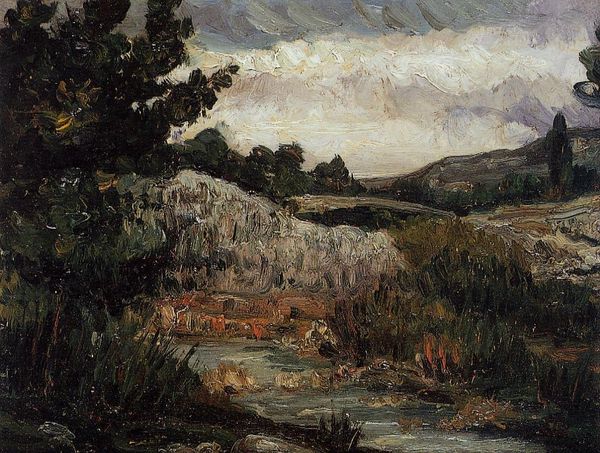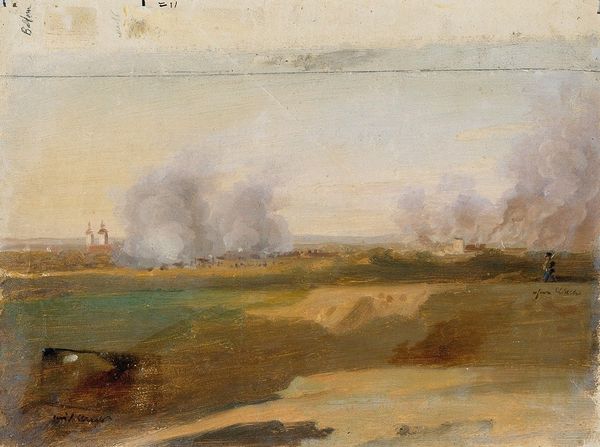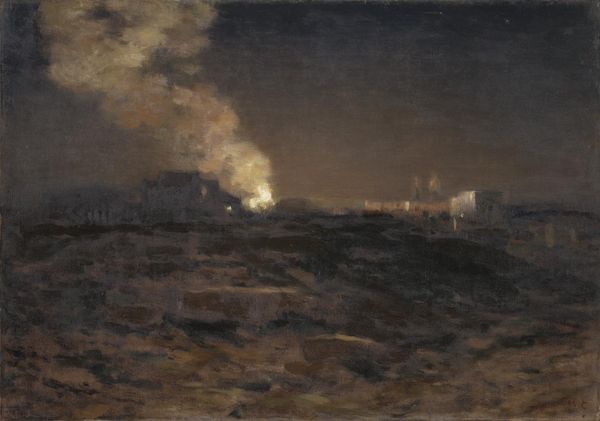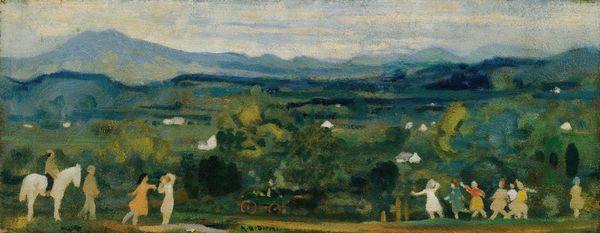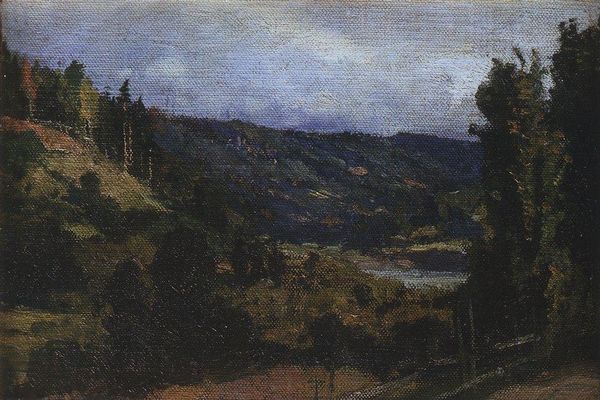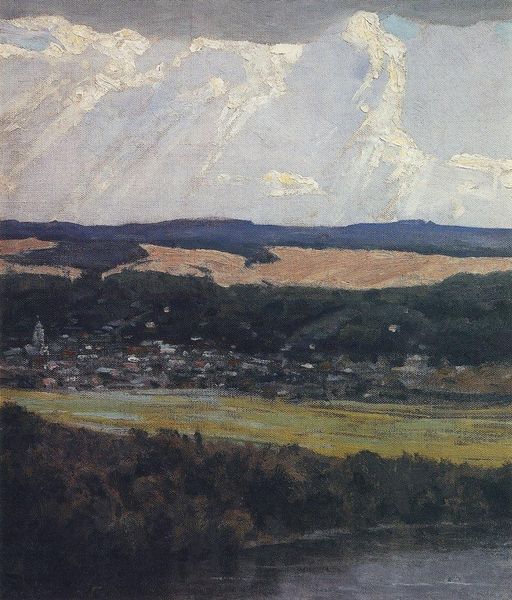
Copyright: Public domain
Curator: Claude Monet's "The Train," painted in 1872, offers a fascinating view of industrialization’s impact. Editor: It's somber, almost mournful. The plumes of smoke dominate the canvas, blurring the buildings. A stark contrast between the earthiness of the landscape and the coldness of industry. Curator: Monet was certainly interested in capturing the changing landscape due to industrial progress. Look closely and you can appreciate how he manipulated the oil paints, almost sculpting with light. Notice how the factories represented are competing for the sky and the viewer's attention, emphasizing the role of industrial labor in shaping both society and its perception. Editor: Yes, there is this contrast and superimposition you mentioned. It's hard to tell what is industry and what is landscape. His loose brushstrokes definitely break down forms and almost obscure distinctions between sky, smoke, and the city's architecture. The material's properties are interesting too—look how Monet used the texture of the oil paint itself to evoke the thickness of the air and the grimy impact of the smoke on the land. Curator: Absolutely, this engagement with the conditions of modernity places "The Train" at the forefront of examining material progress as societal transformation. We could delve even further into considerations surrounding working-class culture. The puffs of smoke almost romanticize, softening its stark realities of labor and social transformation. Editor: Do they? I am more interested on how these smoke puffs impact on Monet's formal arrangement: their visual weight challenges the idea of balance; rather than a stable, organized landscape, the image presents movement and volatility—like smoke from a recently fired industrial complex. It really captures a moment in flux. Curator: It also acknowledges a pivotal moment. With a considered eye, it shows how the railways served as a vital infrastructure, moving not only goods but also workers to new lives, however exploited, creating the economic ecosystem to supply Paris and France with vital resources for trade and expansion. Editor: It's that tension, that liminal space Monet captures that fascinates me, a true Modernist perspective! Curator: Indeed! It prompts discussions about modernity and labor while providing endless art for thought about impressionism as a visual technique and its intersection with emerging social movements.
Comments
No comments
Be the first to comment and join the conversation on the ultimate creative platform.
